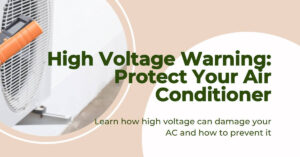Electric heaters are commonly used to provide warmth and comfort during cold weather. However, it’s important to ensure that the heater you choose is compatible with the power supply available in your home. In the United States, the standard power supply is 110V.
But what if you have a 220V heater? Can you run it safely on a 110V power supply? Operating a 220V heater on a 110V power supply can lead to inadequate heating, potential damage to the heater and electrical system, and safety hazards.
In this article, we will explore the compatibility of a 220V heater with a 110V power supply and discuss the considerations and options available.
Understanding Voltage Ratings
What is Voltage?
Voltage is the electrical potential difference between two points in an electrical circuit. It is measured in volts (V) and indicates the force or pressure of the electrical current. Different countries and regions have varying standard voltage levels for their power supply.
Voltage Ratings of Electrical Appliances
Electrical appliances, including heaters, are designed to operate at specific voltage ratings. The voltage rating is typically indicated on the product label or in the manufacturer’s specifications.
It is important to match the voltage rating of the appliance with the voltage of the power supply to ensure safe and efficient operation.
Compatibility of a 220V Heater with a 110V Power Supply
Differences between 220V and 110V
A 220V power supply operates at a higher voltage level than a 110V power supply. This difference in voltage affects the power consumption and performance of electrical appliances.
It is generally not recommended to operate a 220V heater directly on a 110V power supply due to the significant difference in voltage.
Potential Issues with Running a 220V Heater on 110V
Running a 220V heater on a 110V power supply can lead to several issues:
- Insufficient Heating Capacity: A 220V heater operating at half its intended voltage may not generate enough heat to provide adequate warmth in the intended space. This can result in reduced comfort during colder temperatures.
- Overloading and Damage: The 110V power supply may not have the capacity to handle the higher power demand of a 220V heater. This can lead to overloading, tripped circuit breakers, or even damage to the heater or electrical system.
- Safety Hazards: Incompatible voltage can pose safety risks, including the potential for electrical shorts, overheating, or electrical fires. It is crucial to prioritize safety when using electrical appliances.
Read also my article: Voltage Mismatch: Consequences of Running a 220V Dryer on 110V
Considerations for Running a 220V Heater on 110V
Power Consumption
A 220V heater operating on a 110V power supply will consume more current to compensate for the lower voltage. This increased current draw can strain the electrical system and may lead to higher energy costs.
Safety Concerns
Using a 220V heater on a 110V power supply can compromise the safety of the appliance and the electrical system.
The increased load on the circuit can generate excessive heat, posing a fire hazard. It is essential to prioritize safety by using equipment that is compatible with the available power supply.
Equipment Modifications
In some cases, it may be technically possible to modify a 220V heater to operate on a 110V power supply.
However, such modifications should only be undertaken by qualified professionals who can ensure the necessary adjustments are made safely and effectively.
Options for Operating a 220V Heater on 110V
Using a Voltage Converter/Transformer
One option is to use a voltage converter or transformer. These devices can step up or step down the voltage to match the requirements of the heater.
However, it is important to choose a converter or transformer with the appropriate wattage and ensure it is of high quality to maintain safety and efficiency.
Utilizing a Step-Down Transformer
A step-down transformer is specifically designed to reduce the voltage from a higher level to a lower level.
By using a step-down transformer, you can safely operate a 220V heater on a 110V power supply. However, it is essential to select a transformer with adequate power capacity and consult with an electrician to ensure proper installation.
Seeking Professional Advice
When dealing with electrical compatibility issues, it is always advisable to seek professional advice from licensed electricians or HVAC technicians.
They can assess the specific requirements of your 220V heater and recommend the best course of action for safe operation on a 110V power supply.
Conclusion
In conclusion, running a 220V heater on a 110V power supply is not recommended due to the significant voltage difference.
It can lead to inadequate heating, potential damage to the heater and electrical system, and safety hazards.
It is crucial to prioritize safety and choose heating equipment that is compatible with the available power supply.
If you require a 220V heater in a 110V environment, consult professionals for appropriate options and solutions to ensure safe and efficient operation.
